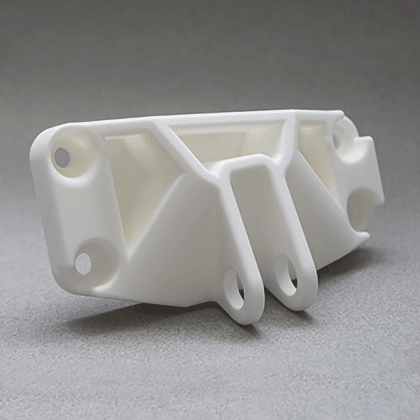Unlocking the Secrets of SLS Prototyping: Transforming Ideas into Reality in Industry!
In the fast-paced world of modern industry, innovation is the key to staying competitive. One of the most revolutionary technologies enabling this innovation is Selective Laser Sintering (SLS) prototyping. This advanced form of 3D printing has become increasingly relevant across various sectors, allowing businesses to rapidly transform their ideas into tangible products. The purpose of this article is to dive deep into SLS prototyping, exploring its core principles, diverse applications, and the myriad benefits it offers to industries ranging from automotive to healthcare. By understanding SLS prototyping, we can appreciate how it is reshaping the landscape of manufacturing and product development.

Understanding SLS Prototyping
Selective Laser Sintering (SLS) prototyping is a groundbreaking additive manufacturing process that utilizes a laser to fuse powdered materials into solid structures. The technology operates by selectively sintering layers of powdered thermoplastics, metals, or ceramics, which are spread across a build platform. When the laser beam hits the powder, it causes the particles to melt and bond together, layer by layer, until the final prototype is formed. One of the most appealing aspects of SLS is its ability to create complex geometries that would be nearly impossible to achieve with traditional manufacturing methods. Materials commonly used include nylon, polyamide, and various metal powders, offering a range of properties suited for different applications. A friend of mine who works in product design recently shared how SLS allowed them to create intricate prototypes of their new gadget, which saved them both time and resources during the development phase. Understanding this technology is crucial for businesses looking to stay ahead in a competitive landscape.
Applications of SLS Prototyping in Various Industries
SLS prototyping has found applications across a wide spectrum of industries, showcasing its versatility and effectiveness. In the automotive sector, for instance, SLS is employed to create lightweight, durable components that can withstand rigorous testing, ultimately leading to faster time-to-market for new vehicle models. The aerospace industry also benefits significantly from SLS, as it enables the production of complex parts that reduce weight without compromising strength, essential for enhancing fuel efficiency. In healthcare, SLS prototyping is invaluable for creating custom medical devices and anatomical models, allowing for better patient-specific solutions and surgical planning. Moreover, consumer product companies leverage SLS to iterate designs quickly, allowing them to respond to market demands more effectively. The potential applications are vast and continually expanding, demonstrating how SLS is not just a fleeting trend but a cornerstone of modern manufacturing.
Advantages of SLS Prototyping
The advantages of SLS prototyping are numerous and compelling. One of the most notable benefits is design flexibility; SLS allows for the creation of intricate designs that traditional manufacturing methods cannot achieve. This flexibility is a game-changer for designers and engineers who wish to explore innovative concepts. Additionally, the speed of production is a critical factor; SLS can produce prototypes in a fraction of the time it would take through conventional methods, enabling quicker iterations and faster product launches. Material efficiency is another significant advantage, as SLS minimizes waste by only using the powder that is needed for each build. This not only conserves resources but also reduces overall production costs, making SLS an economically viable option for many businesses. These advantages collectively highlight why SLS prototyping is becoming a preferred choice in numerous industries.
Challenges and Limitations of SLS Prototyping
While SLS prototyping offers extensive benefits, it is not without its challenges and limitations. One primary concern is the cost associated with SLS technology; the initial investment in high-quality SLS printers and materials can be significant. For smaller businesses or startups, this can pose a barrier to entry. Additionally, while SLS has a wide range of materials, there are still limitations regarding the types of materials that can be used effectively. Some materials may not achieve the desired properties for specific applications, requiring careful selection and testing. Furthermore, the need for post-processing can add time and expense to the overall production process. Parts often require additional finishing steps, such as sanding or coating, to achieve the desired surface quality. Addressing these challenges is crucial for businesses looking to implement SLS prototyping effectively.
Summary of SLS Prototyping Insights
In conclusion, SLS prototyping stands out as a transformative technology that is reshaping the manufacturing landscape across various industries. With its ability to produce complex geometries, rapid prototyping capabilities, and material efficiency, it offers significant advantages that can propel businesses forward. However, it is essential to navigate its challenges, such as cost and material limitations, to fully harness its potential. As industries continue to evolve, the importance of SLS prototyping will only grow, encouraging further exploration and adoption of this innovative technology. Embracing SLS can lead to improved product development processes and ultimately, a stronger competitive edge in the market.








